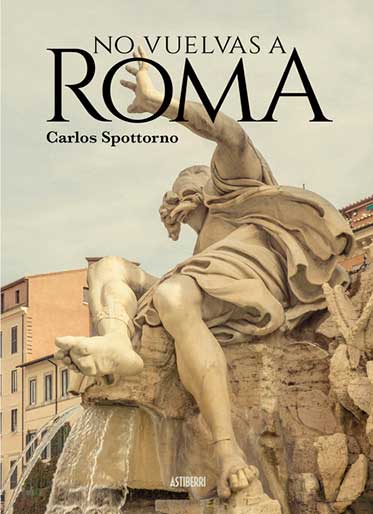A man who spent a few years, a decade, between his childhood and his youth in Rome, visits her in the company of his new family. He remembers that he lived near the Pantheon, which was equivalent to being very close to the “center of the universe.” He is driven by nostalgia, but also by curiosity: to know what remains of the city that his memory inhabits. Some friends have tried to dissuade him: like so many other metropolises around the world with a glorious yesterday, his current day-to-day life is that of a “tourist hell”. This man is a famous photojournalist, Carlos Spottorno, who walks the streets of the thousand-year-old Urbs, reflecting on the passage of time, on the sense of the overwhelming beauty that surrounds him. At the same time, he is capturing snapshots of the daily life of the city.
Aunque lo edite Astiberri “Don’t come back to Rome” It’s not a comic, of course. But neither is it a simple book of photographs, although the brilliant images captured by Spottorno’s camera are the common thread: it is a curious book of memories in which, however, the present of the old capital of the Tiber is shown. He had already published, with the reporter Guillermo Abril, two works, in which we found a combination of texts and photographs. In “The Crack” they were leading us towards the hidden borders of the European Union, those who guard them and those who try to cross them; Meanwhile in “The mistake” It placed us in a very different realm, Tyrol, a region over which the Italians and Austrians had fought for generations, and where, now, the old feuds seem to have dissolved into an alpine paradise weighed down with the full weight of the continent’s history. . In this case, alone, we find ourselves with a much more personal work that will be appreciated, of course, by lovers of the Eternal City.
Rome is the protagonist. “It is difficult to determine if Rome is the graveyard of a lost civilization or the flash of a supernova whose light continues to reach us now.” With its contrast, already visible in mythical films such as “The sweet life” by Fellini and “La gran belleza” by Sorrentino, between the splendor of its past and the decadent air that invades it, between the sublime beauty of its ruins and the daily horror of graffiti, garbage and traffic jams: a city, in addition“in which today manages to be more decrepit than yesterday”, something to which testimony is offered on many pages of this book. It would be said, as the author ironically observes, that “it is as if there were a plan of self-destructive interventions designed to prevent everything from being too perfect.” Although perhaps that slow and gradual collapse, that melancholy, has become part of his charm and, even more, a perfect metaphor for our world. Borges already wrote on one occasion that in the West we are all, in some way, Romans.
